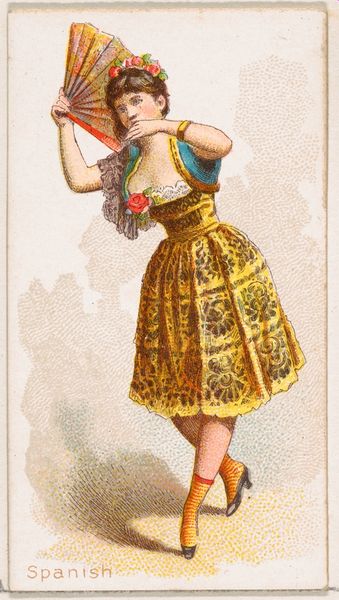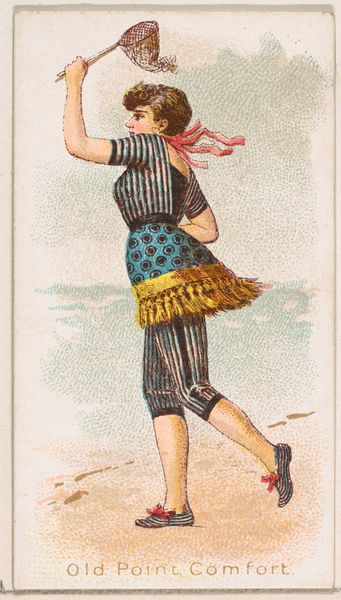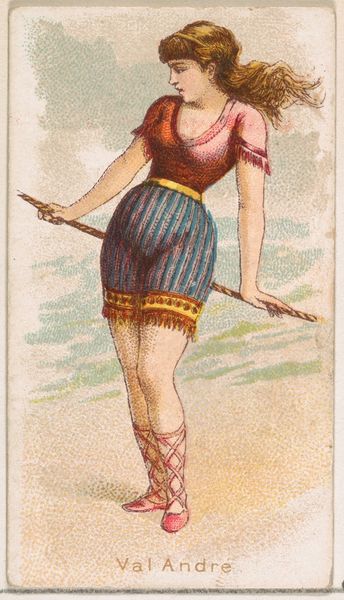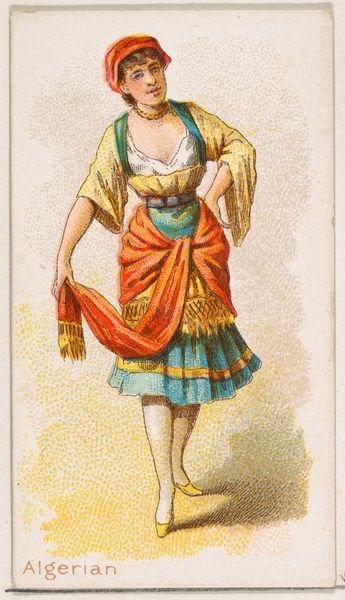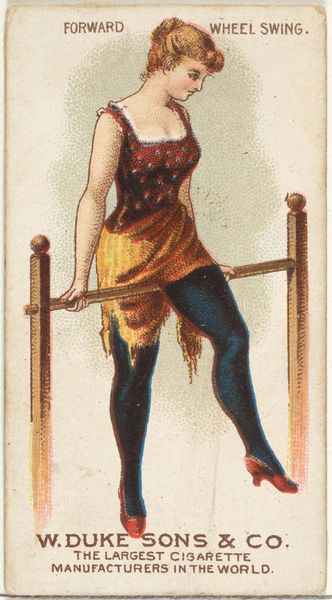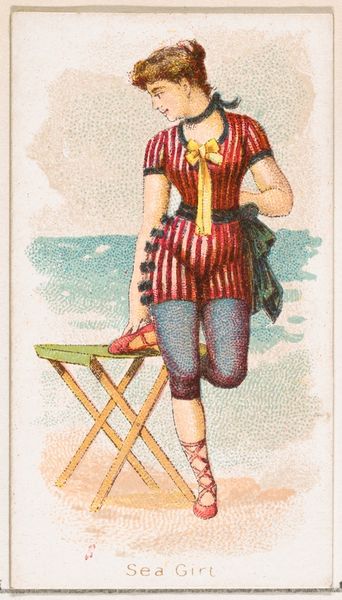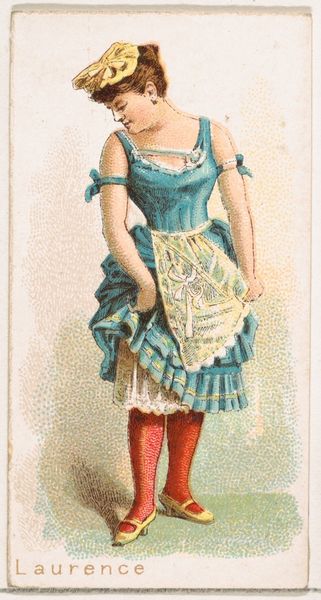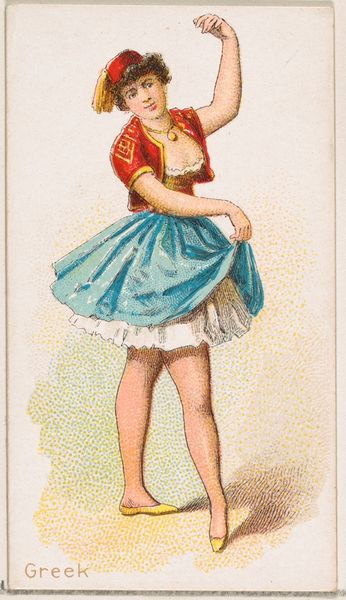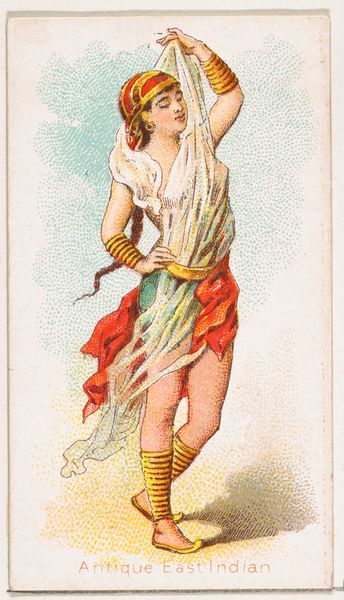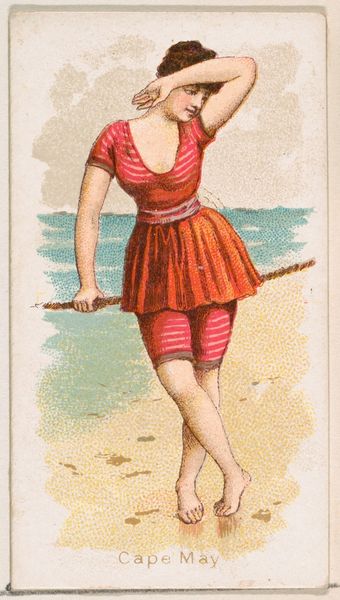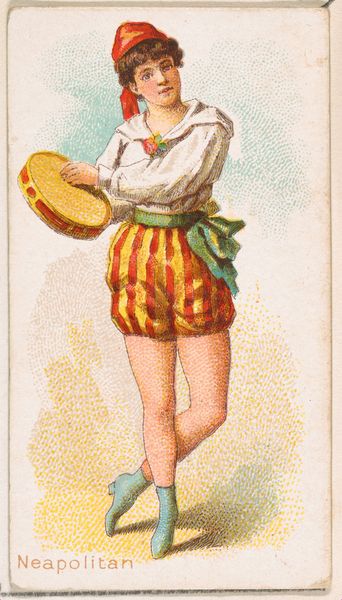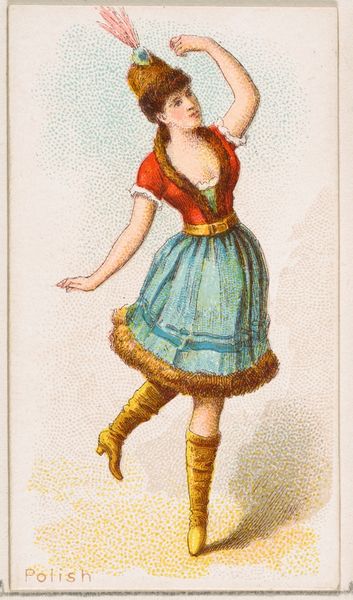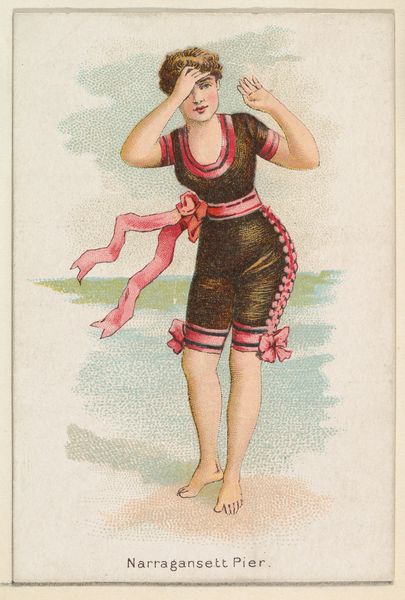
Cherbourg, from the Fancy Bathers series (N187) issued by Wm. S. Kimball & Co. 1889
0:00
0:00
drawing, coloured-pencil, print
#
portrait
#
drawing
#
coloured-pencil
# print
#
impressionism
#
caricature
#
figuration
#
coloured pencil
#
genre-painting
Dimensions: Sheet: 2 11/16 × 1 1/2 in. (6.9 × 3.8 cm)
Copyright: Public Domain
Curator: Before us is a piece titled "Cherbourg, from the Fancy Bathers series (N187) issued by Wm. S. Kimball & Co.", dating back to 1889. It now resides here at The Met. Editor: I’m struck by how modest and awkward she looks in that striped bathing suit. There’s a tentativeness in her pose, and the limited color palette gives it a faded, almost dreamlike quality. Curator: These “Fancy Bathers” were included as collectable cards with Kimball & Company’s cigarettes. This points to an interesting intersection of industry and imagery in late 19th century consumer culture, and a shift towards the commodification of leisure and beauty ideals for mass consumption. Editor: Exactly! Think about the chromolithography used to make these prints. It wasn't "fine art," but it was craft. Labor went into each card printed by the millions and distributed alongside another crafted product: cigarettes. It says so much about access and how images enter the daily lives of a broader audience through mundane objects. Curator: And while seemingly innocent, these cards also hint at emerging societal norms regarding female athleticism and public displays of the body. The bathing costume, while demure by today's standards, signifies a departure from more restrictive garments. Its circulation certainly contributed to evolving standards of representation. Editor: True. Plus, the very materiality! Mass-produced colored-pencil prints evoke a sense of intimacy through what would have felt familiar textures, perhaps contributing to the feeling of relatability of these bathers, rendered en masse to appeal to customers on many rungs of the socio-economic ladder. Curator: That tactility surely facilitated their integration into the collective imagination, offering consumers readily accessible portraits of evolving femininity at the dawn of modernism. Editor: It's amazing how much this small card packs in terms of material culture. It reminds us that studying what seems ‘minor’ or merely ‘decorative’ can be an important historical exercise, revealing complex societal relations related to industrial methods and labor as well as image circulation and desire. Curator: Indeed. The object may be diminutive, but the implications are substantial. Editor: Absolutely. Something easily overlooked becomes, on closer examination, quite revelatory about production and representation.
Comments
No comments
Be the first to comment and join the conversation on the ultimate creative platform.
